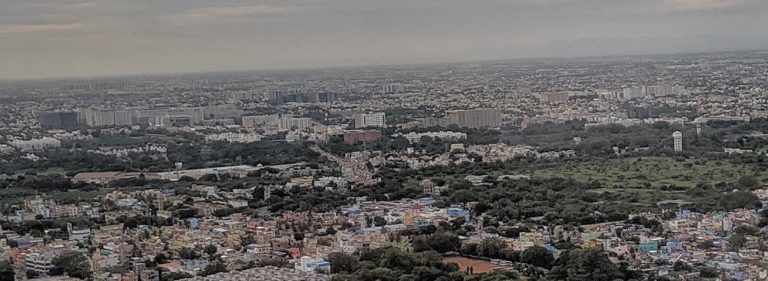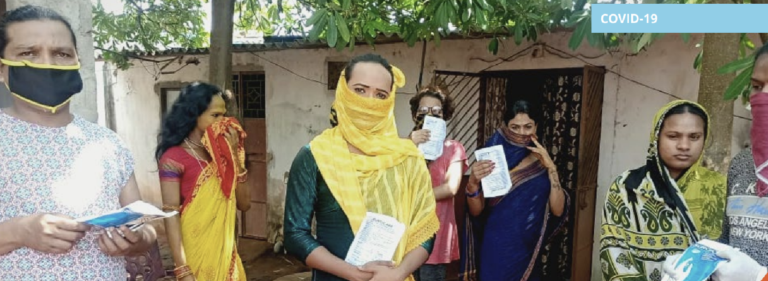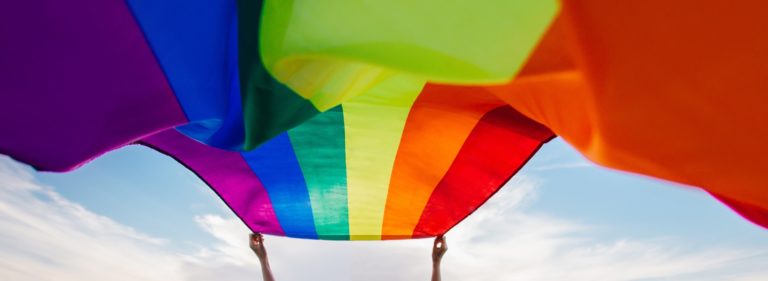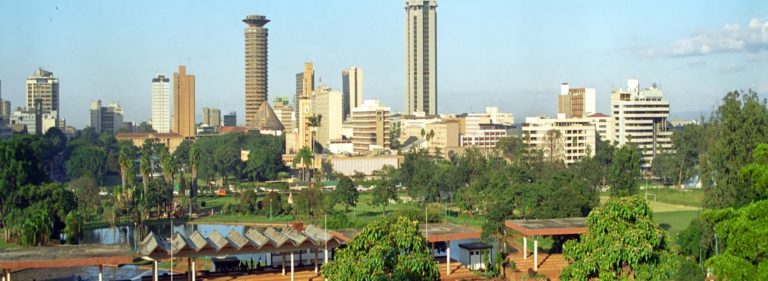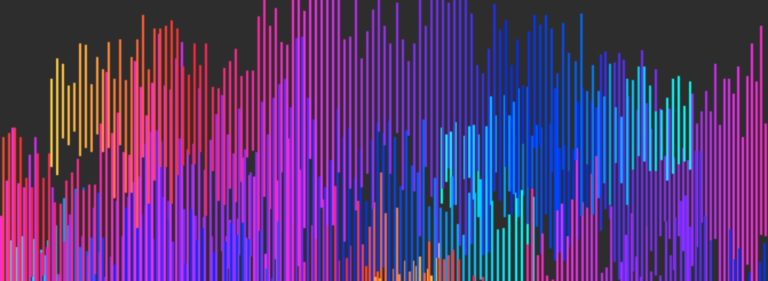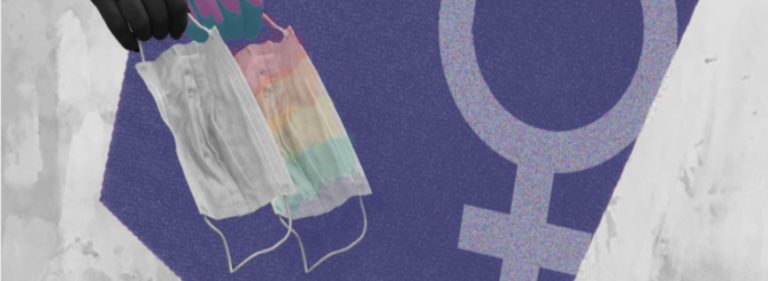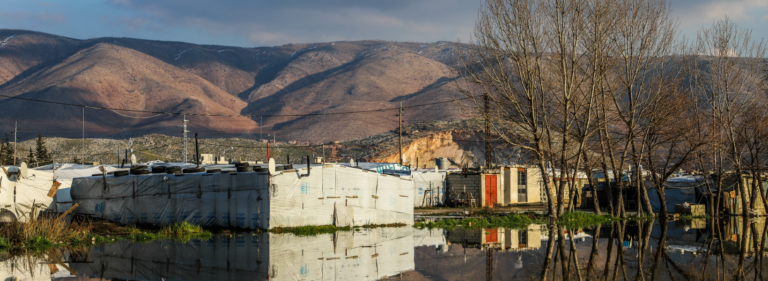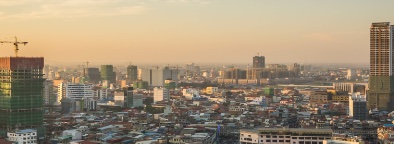This brief paper is part of a series of Working Papers, published through McMaster University, on COVID-19 and its impacts on marginalised groups. The paper provides a brief overview of the state of play as of May 2020 in regards to COVID-19 and populations most and least impacted by the pandemic, as well as the rapid changes in information and data that have occurred in the past 4 months. The paper then points to the significant gaps in healthcare infrastructure in Canada whereby sexual and gender minorities are left out. The mental health impacts of COVID-19 and required social distancing, especially on the 2SLGBTQIA+ community. The paper concludes with a very brief summary of the researchers’ upcoming work to gather and summarise novel data on COVID-19 in 2SLGBTQIA+ communities.
The Sustainable Development Goals and LGBT Inclusion
This ten-page guide looks at seven of The Sustainable Development Goals (SDGs) and highlights the issues faced by LGBT people in the implementation of each goal. Specifically, the guide addresses goals one (no poverty), three (good health and well-being), four (quality education), five (gender equality), ten (reduced inequalities), eleven (sustainable cities and communities) and sixteen (peace, justice and strong institutions). The guide opens with a short introduction of the SDGs and highlights the importance of the “leave no one behind” principle. The authors argue that the principle is particularly important for LGBT people as they continue to face issues of social and legal discrimination. The authors further argue that national and international development programmes which fail to adequately take into account the specific needs of LGBT people are not upholding the “leave no one behind” principle. The report affirms that the impact of these challenges on LGBT people are, among other issues, poorer educational, health and economic outcomes. The authors further argue that poverty cannot be eradicated until development organisations and governments account for and respond to the needs of LGBT people in their initiatives to address the SDGs.
The guide addresses each of the seven chosen SDGs separately. Each SDG is first discussed in terms of how LGBT people have been left behind in the implementation of the SDG. A specific example of this occurring is then provided. Following the example, recommendations of practical actions that can be taken by organisations to ensure the full inclusion of LGBT people in their work are listed. A case study highlighting the success of a development organisation working to address the needs of LGBT people is provided for each SDG. Each case study introduces a particular development organisation, outlines a specific problem faced by an LGBT person or group and then explains how the organisation was able to work towards overcoming the issue. The report concludes with seven final recommendations of how to ensure that LGBT people are not left behind in international development.
Sexual and Gender Minorities and COVID-19: Guidance for WASH delivery
This paper was prepared by Edge Effect as part of our Technical Expert role in the Water for Women Fund. This paper considers the ways in which the COVID-19 crisis has exacerbated pre-existing marginalisation of and discrimination against people with diverse sexual orientations, gender identities and expressions, and sex characteristics (SOGIESC) especially within the water, sanitation and hygiene (WASH) space.
The guidance note aims to enable WASH practitioners to better meet the needs of people with diverse SOGIESC during the COVID-19 pandemic. The paper opens with an analysis of the consequences of common experiences of discrimination through the prism of COVID-19. The paper then provides brief case studies before offering key considerations for transformative sexual and gender minority inclusion. The paper concludes with specific recommendations for different types of WASH projects before offering additional resources.
WfW_EdgeEffect_Guidance-Note_COVID-19-WASH-SGM-Inclusion-FINAL42 Degrees Glossary and Lexicon
42 Degrees Glossary and Lexicon
Terms and concepts to enable diverse SOGIESC inclusion work
We strive to be radically inclusive in its terminology and conceptual frameworks. To that end, we have done our utmost to provide a lexicon that can and should be used by development and humanitarian practitioners in their work. This is by no means a complete lexicon: the majority of the terms and concepts included in this lexicon are rooted in western understandings of sexual and gender diversity. We recognise that the terms and definitions included are not comprehensive and may not resonate with all people who identify as part of the diverse SOGIESC community. While this list is by no means static, it is not meant to be a complete list of terminology. It is rather meant to be an entry point for practitioners: how can expanding your understanding of sexual and gender diversity expand your inclusion practice? Are the lived realities of your community, or the communities for whom you work, reflected in this list? If not, how might you learn more about these realities? Which civil society organisations or local groups can you work with to ensure inclusion moves beyond the binary?
Terminology
Terminology can be tricky. It seems ‘the acronym’ is always growing: LGBT to LGBTQ to LGBTIQA+. The acronym is increasingly considered problematic because it requires individuals to identify with a static label—and for many people, the labels available in the acronym do not align with their experience of sexual orientation or gender. The below terminology list has been provided as a guide and an explanation of why we use the terms we use. The best (and most respectful!) strategy is to follow the self-identification of the people or organisations with which you are engaging. It may be appropriate and necessary to ask for guidance when in private. If in doubt, reach out to a local civil society organisation.
Sexual Orientation, Gender Identity/Expression, and Sex Characteristics (SOGIESC/Diverse SOGIESC)
SOGIESC stands for sexual orientation, gender identity and expression, and sex characteristics. All people have SOGIESC. Edge Effect uses the terminology diverse SOGIESC to refer to non-cisgendered, non-heterosexual, and intersex people (aka the LGBTIQA+ community) in our work. We use diverse SOGIESC rather than LGBTIQA+ because we understand that the human experience of sexuality and of gender cannot always be neatly labelled. Diverse SOGIESC is more inclusive of specific third-gender groups such as the waria of Indonesia. The LGBTIQA+ acronym is rooted in certain understandings and assumptions of sexual orientation and gender identity and expression, and does not hold space for specific cultural third-gender groups such as the waria of Indonesia.
Sexual Orientation, Gender Identity/Expression (SOGIE)
Edge Effect uses SOGIE when referencing specific legislation, experiences, studies or other materials that do not reference sex characteristics, but that do reference sexual and gender diversity. Unless intersex people and/or sex characteristics are explicitly mentioned or discussed, the term SOGIE should be used.
Sexual and gender diversity
The term ‘sexual and gender diversity’ is used in recognition of the galaxy of human sexuality and gender identity and expression but does not include intersex people. This is a broad term.
Sexual and Gender Minorities (SGM)
Edge Effect sometimes uses the phrase ‘sexual and gender minority/SGM’ because it is relatively simple, descriptive and broad. In this framing, minority does not refer to a numerical minority, but denotes the power imbalance that renders sexual and gender minorities invisible or left excluded. This phrase draws upon traditions of minority politics that emphasise agency, creativity and resistance of the oppressed.
Lesbian, Gay, Bisexual, Trans, Queer, Intersex, and others (LGBTIQ+)
LGBTIQ+ is the most frequently used acronym to refer to the diverse SOGIESC community. Edge Effect prefers diverse SOGIESC to LGBTIQ+ because diverse SOGIESC is a more inclusive term that recognises the sexual orientation and gender identity and expression cannot always be neatly labelled. We do, however, use LGBTIQ+ when it is appropriate for our audience: we take our cues from the people we work with, and work to meet our colleagues where they are at. We recommend our partners and the people we work with use diverse SOGIESC wherever possible and appropriate.
Gender Galaxy
The idea that gender is not a binary, nor a spectrum, but a space of infinite and fluid possibilities for gender identity and expression. There are many interpretations and imaginations of the gender galaxy, but all are based on the idea that gender identity and expression may not be fixed, nor are they ‘somewhere’ between two poles (as conceptualised on the gender spectrum).
Markers of Identity
Gender
The socially and culturally constructed and reinforced ideas of what it means to be a certain gender (third gender, male, or female) in a specific context. Gender is often assumed to be along binary lines (i.e. man/woman), but is in fact a galaxy. Gender is rooted in social norms rather than in biology. Gender is constructed and reinforced through norms and expectations whereby an individual is expected to act in a certain way based on their perceived gender, regardless of whether those actions align with an individual’s interests, wants, or needs. Gender is a relational concept that cannot be understood in a vacuum: it is best understood when examining interactions and relationships between individuals and between or within social groups and institutions.
Sex Characteristics
Sex characteristics are the genetic, hormonal and anatomical characteristics used to classify physical sex at birth. Determination of sex is usually based on pre-determined anatomy of external genitalia, but also informed by internal reproductive organs and hormones. The medical community’s understanding of the diversity of human sex characteristics is expanding.
Agender
A person who does not identify with any gender. Agender is not synonymous with non-binary: agender literally means ‘without gender,’ while non-binary people identify as having a gender other than exclusively masculine or feminine.
Intersex
A person born with physical sex characteristics (including genitalia, hormones or chromosomes) that do not align with medical definitions or societal expectations of female or male bodies. Intersex characteristics may be apparent at birth, may not be detected until later in life, such as when a person begins puberty or becomes pregnant, or may never be detected at all.
Gender Identity
Each person’s deeply felt internal and individual experiences of gender, which may or may not correspond with the gender assumed or sex assigned at birth, including their personal sense of their body and self. Gender identity is not fixed nor is it along binary lines and a person’s gender identity can change, shift, or alter over time.
Gender Expression
Usually, but not always, the external presentation of someone’s gender identity, usually expressed in many ways including through clothing, haircut, voice, bodily movements they ways one interacts with others, and how they one identifies. Gender expression can differ from that which is stereotypically associated with a person’s sex assigned at birth and often changes over time.
Gender diverse
An umbrella term used to refer to people and/or communities who identify as genders beyond the binary. Gender diverse can include people who are gender non-conforming, gender queer, gender neutral, third gender (such as hijra), or whose gender identity and or expression does not otherwise conform to binary norms.
Gender Fluid
A term to describe someone who moves between gender constructions and whose identity and expressions vary over time. A gender fluid person may move between binary genders or other genders (i.e. ‘woman’ and ‘non-binary’).
Gender Queer
A person or people and/or communities who identify or express themselves as masculine or feminine genders; gender queer people identify within a galaxy of genders. Gender queer is a western-term that may or may not apply to specific third-gender groups. Gender queer is often used interchangeably with non-binary, although non-binary is more common.
Cis/cisgender
A person who identifies with their gender assumed or sex assigned at birth. Someone who does not identify as trans or as non-binary.
Trans
An umbrella term for people whose gender does not match the assumed gender or sex they were assigned at birth. Trans usually references people who were assigned a binary sex at birth, but who identify with a different gender (i.e. assigned female at birth, identify as male or identify as non-binary). Trans does not necessarily encompass culturally-specific genders.
Third Gender
Can be used to describe people or communities who identify outside of the gender binary, but is more often used to refer to a person or group of people who have a specific gender identity that may or may not be legally recognised. Third gender groups include the metis of Nepal and the hijra of Bangladesh, both of whom have legal third gender recognition as well as specific social, cultural and economic roles that they play in their respective societies. Third gender is not interchangeable with non-binary, gender queer or gender-fluid.
Non-binary
A person, people or community who do not identify with exclusively masculine or feminine genders; non-binary people identify within a spectrum of genders. Non-binary is a term that may or may not apply to unique third gender groups.
Sexual Orientation
A person’s capacity for profound emotional, romantic and sexual attraction to, and intimate and sexual relations with individuals or people of a different gender, the same gender, or more than one gender. Sexual orientation can change overtime.
Asexual
People and/or communities who are/identify as any gender who are not sexually attracted to any person of any gender, but who may experience romantic attraction.
Bi
People and/or communities who are/identify as sexually and/or romantically attracted to people of more than one gender.
Gay
People and/or communities who are/identify (primarily) as men, who are sexually and romantically attracted (primarily) to other people who also identify as men. Gay can also be used as an umbrella term to refer to same-sex attracted people who do not identify as male.
Heterosexual
People and/or communities who are/identify as any gender, who are sexually and romantically attracted (primarily) to people of the opposite gender identity as themselves, not necessarily within the binary gender model (i.e. a cisgender woman and cisgender man; a cisgender woman and trans man; trans woman and trans man).
Homosexual
People and/or communities who are/identify as any gender, who are sexually and romantically attracted (primarily) to people of the same gender as them. This term is less commonly used and has some clinical connotations. We do not use the term homosexual and it is included here only for clarification, as it does appear in some resources.
Lesbian
People and/or communities who are/identify as (primarily) women, who are sexually and romantically attracted (primarily) to other people who also identify as women; people and/or communities who identify as non-binary may also identify as lesbian.
MSM (men who have sex with men)
A term that was developed and became popularised during the HIV/AIDS epidemic to describe men who may not necessarily identify as gay or bisexual, but who have sex with men. MSM describes a behaviour, not an identity. MSM remains common in medical literature including global and public health.
Pansexual
People and/or communities who are/identify as any gender who may be sexually and romantically attracted to people of all genders.
Polysexual
A person and/or communities who are/identify as any gender who may be sexually and romantically attracted to people of multiple, but not all, genders.
WSW (women who have sex with women)
A term that has been more recently developed and popularised in research and health programming for diverse SOGIESC people. WSW describes a behaviour, not an identity. WSW is most often used in health and public policy settings, and is less widely used and less known than MSM.
Queer
An umbrella term for people or communities who are/identify as non-cisgendered or non-heterosexual. Queer was previously, and by some continues to be, considered a deeply derogatory slur towards gay men. It is, however, being reclaimed within the diverse SOGIESC community, especially amongst younger people. The term ‘queer’ conveys a sense of politicality, community and connectedness that other terms do not convey; it covers sexual orientation, gender identities and expressions, and sex characteristics in a way that other terms do not. Individual people may refer to themselves as queer or as being members of the queer community while others may not; some agender and asexual people may identify as queer.
AREAS OF ANALYSIS
Gender Binarism
The organisation of social structures, relationships, and societal institutions based on the assumption that all people identify as either men or women; that there are only two genders. Making this assumption excludes non-binary people and people who identify as culturally as third-gender, for example Hijra (Bangladesh), Waria (Indonesia), and Leitis (Tonga). Gender binarism has negative consequences for gender non-conforming, gender queer, agender, third-gender, trans or otherwise non-binary folk in the humanitarian and development systems: for instance, assuming that all unaccompanied refugees can be safely housed in ‘male’ or ‘female’ housing puts trans and other non-binary people at risk. A trans man’s identity document may say that he is ‘female,’ but assigning him to a female barrack may put his safety and security at risk. Gender binarism is a central characteristic of cisnormativity.
Heteronormativity
The organisation of social structures, relationships, and societal institutions based on the assumption that all people are heterosexual. Heternormativity is a way of seeing and organising societies which includes passing judgement on what constitutes ‘normal’ family units and behaviours for men and women. Making this assumption excludes gay, lesbian, bi and other people who are not heterosexual. For instance, the vast majority of housing for refugees is based on heteronormative understandings of relationships whereby a ‘family unit’ contains a husband, a wife, children and extended family. This does not account for same-sex couples or rainbow families.
Dyadism
The assumption that all people have genitalia, hormones and chromosomes that conform to social and medical definitions of female and male bodies. Making this assumption excludes intersex people. The exclusion of intersex people through dyadism or through dyadic assumptions poses significant challenges for the intersex community: health care, public showers and toilets, and even amateur and professional sporting regulations are developed with a dyadic framework.
Cisnormativity
The organisation of social structures, relationships, and societal institutions based on the assumption that all people’s gender identity matches the sex they were assigned at birth. Making this assumption excludes trans and other gender diverse peoples. For instance, women’s rights organisations and movements can struggle to move beyond unifying calls rooted in cisnormativity: assuming that all people who identify as women have a shared experiences rooted in biology (such as menstruation, childbirth, or even experiences with hormonal birth control) exclude trans women and intersex people. See cis/cisgender.
Intersectionality
Intersectionality is a framework that acknowledges and critically considers how different characteristics—such as gender, sexual orientation, physical/mental ability, age, rurality, geographic location, nationality and/or religion—interact to shape an individual person or group’s experience of the world. In this way, intersectionality does not consider one characteristic to be a person’s primary ‘source’ or marginalisation, but seeks to understand how multiple characteristics can compound and shape marginalisation or, equally, create opportunities for empowerment and resilience. An intersectional analysis of refugee food distribution would, for instance, consider how a person’s gender identity and expression; sexual orientation; age; marital status; whether or not a person cares for children; whether the person is in a romantic partnership or is single; religion; ethnicity and physical and mental dis/abilities might change their ability to access food.
“We have a Broken Heart”: Sexual Violence against Refugees in Nairobi and Mombasa, Kenya
Knowledge around sexual and gender based violence in conflict settings is most often limited to cisgender male violence against cisgender women; little is known about the experiences of men and boys, and of people with diverse sexual orientations, gender identities and expressions, and sex characteristics. The Women’s Refugee Commission (WRC) conducted an exploratory study into the experiences of men, boys and trans women living in refugee settings in Mombasa and Nairobi, Kenya. Interviewees had fled conflict in South Sudan, the Democratic Republic of the Congo (DRC), and Somalia.
The report found that conflict-related sexual violence perpetrated by armed groups against men and boys appeared common place in the DRC and South Sudan. Refugees with diverse SOGIESC were at an increased risk of violence–including sexual violence–from family and community members rather than armed groups.
All 26 research participants with diverse SOGIESC ‘spontaneously disclosed’ experiences of sexual victimisation in their countries of origin, and all 26 participants again reported experiencing sexual violence after arriving in Kenya. In Mombasa, sexual exploitation of adolescent boys appeared to be common. Livelihoods barriers contribute to increased vulnerability to sexual exploitation among youth refugees and refugees with diverse SOGIESC.
Sexual violence against men and boys has an impact upon female family and community members: in all three countries of origin, sexual violence against women and girls is widespread and is often a tool of war. Research participants saw connections between men and boys’ experiences of sexual violence and their perpetration of intimate partner violence against women and girls.
The mental and physical health impacts of sexual violence are significant across all genders and age groups. Ridicule and shame are experienced across all groups, and marriage prospects for single men who have experienced sexual violence are limited.
The report found that while there are some high quality services available for men, women and refugees with diverse SOGIESC who have experienced violence in Nairobi, these services cannot meet the demand of the urban refugee population; in Mombasa there are very limited post-sexual violence services available.
Overall, the report found that multiple barriers can prevent refugees from access services, such as lack of documentation, economic hardship, legislative barriers (especially for refugees who have experienced same-sex sexual violence), lack of awareness of availability of services, and socio-cultural barriers.
The report presents these findings in the executive summary, offers recommendations, and then provides a detailed presentation of the methods and research process, and findings.
Sexual Orientation & Gender Identity in Contexts Affected by Fragility, Conflict and Violence
This discussion paper provides an analysis of secondary sources pertaining to the challenges faced by sexual and gender minorities in fragile, conflict, and violence (FCV) affected states. The report aims to outline existing knowledge and guidance for development and humanitarian practitioners.
The report opens with a discussion of FCV states around the world and some of the challenges sexual and gender minorities face in developing contexts. These challenges include access to basic services and employment; specific issues in forced displacement; and sexual and gender based violence. Specifically, the report notes some of the institutional challenges in aid distribution such as the heteronormative assumptions made around household units; asylum seeking for sexual and gender minorities in countries where same-sex relations are banned; issues for transgender asylum-seekers in housing and livelihoods and protection gaps for sexual and gender minorities who experience sexual and gender based violence.
The report concludes by offering recommendations to fill these protection gaps including fit-for-purpose data collection, SOGI country profiles, a cohesive World Bank approach across the World Bank Group, better cross-sectoral collaboration, and knowledge generation and dissemination, among other solutions.
LGBTQ+ people left out by exclusionary COVID-19 aid practices
Through numerous interviews with activists and members of the LGBTQ+ community around the world, Ritholtz’s article demonstrates the ways in which people with diverse sexual orientation, gender identities and expressions are excluded from accessing humanitarian services during the COVID-19 pandemic. The article looks at the impacts of stay-at-home orders; ‘gender quarantines’ in Latin America; the tying of food-aid to registered addresses (and the unique challenges this poses for gender non-conforming people); and other systemic exclusions faced by the community in the wake of the pandemic.
The article then considers how humanitarian responses could be more inclusive, looking at the Special Rapporteur on SOGI, Victor Madrigal-Borloz, recently announced ASPIRE guidelines. The article specifically points to the intersectional identities of people within in the LGBTQ+ community, and notes that not all members of the community experience the same types or same magnitude of exclusion–for some, it is much worse than for others.
Why is development work so straight? Heteronormativity in the international development industry
The research paper explores the concept of heteronormativity and its role in development practice. Jolly begins by providing a history of the Western-centric notion of heteronormativity, questioning its relevance to non-Western contexts and experiences while acknowledging that the development industry itself continues to use heteronormative understandings in its practice. The article then moves into a discussion of the impacts of heteronormativity in development practice, looking at, for instance, the contested notion of ‘female headed households’ as being inherently more poor and more miserable than the ‘default’ household (invariably heterosexual and cisgender).
The article moves from households into the framing of the HIV/AIDS industry, and questions the ways heteronormative assumptions and judgements have impacted this sector despite its emphasis on same-sex sexual relations between men. For instance, the catch all ‘most at risk populations’ grouping used to refer to non-normative people and communities (i.e. sex workers, drug users, MSM).
Jolly then discusses the gender based violence prevention sector and its heteronormative framing. Jolly questions the heteronormative assumptions in the sector, including the lack of attention to same-sex sexual violence between women, the assumptions that men who experience violence can ‘go to the police’, and other similar assumptions.
The paper concludes by offering that heteronormativity is a useful frame to understand development practice–but that only when the effects of heteronormativity are understood and recognised can the development sector change for the better.
No Place For People Like You: An Analysis of the Needs, Vulnerabilities and Experiences of LGBT Syrian Refugees
Despite the ongoing immense humanitarian response to the refugee crisis emerging from the war in Syria, there is little action taken in order to specifically address the needs of refugee minorities, specifically LGBT individuals. LGBT refugees flee an existing fragile state and seek shelter in neighbouring state Lebanon only to be faced with the ongoing lack of support, discrimination, violence and vulnerability associated with not only refugee status, but also with belonging to the LGBT community. The study discusses six essential findings and provides recommendations based on these findings. The findings are as follows
- LGBT Syrian refugees face ‘Double Discrimination:’ they are discriminated against for their nationality and for their (perceived or actual) sexual orientation
- LGBT refugees in particular have limited support networks as a result of fleeing conflict; social networks and support systems are often informal (i.e. not familial) and these networks are subject to breakdown once in refugee camps or settings
- LGBT Syrian refugees have high mental health needs but low access to appropriate mental health resources. Many participants report poor mental health, such as feelings of loneliness, depression and extreme anxiety.
- The existing support systems exclude LGBT refugees as they are primarily structured around prioritising heterosexual nuclear families.
- Registering with the UNHCR is critical, yet many LGBT refugees are concerned about doing so
- While few NGOs exist in order to address the issues faces by LGBT Syrian refugees, they commonly target developing policy rather than providing safe spaces and support networks for LGBT Syrian refugees to access safely.
The recommendations made by this study are primarily based on the notion of non-discrimination. Specific training and requirements are recommended to be put into place in NGOs and the UNHCR in order to create a space for sharing dignity and allowing all LGBT Syrian refugees to have access to safe, risk-free resources. Furthermore, the study recommends economic self-sufficiency. If individuals have access to safe workplaces they are less likely to turn to survival sex, leaving individuals open to health issues, sexual abuse and violence.
More than Gender: A Baseline Study of Transgender Persons in the Phnom Penh Sex Industry
This study aims to expand the body of research focusing on cis-gendered women and girls engaged in sex work in Phnom Penh, Cambodia. Researchers surveyed male-to-female transgender persons (referred to throughout the paper as ‘transgender persons’ with deference to the multitude of gender identities a person and people may have, although female-to-male transgender persons, trans men, were not surveyed nor included in the research) to understand their experiences with discrimination and harassment.
The report provides a brief overview of gender within the Cambodian context and Khmer language.
The report moves into a brief overview of the history of research into transgender persons in Asia, prejudice and discrimination against transgender communities, and the specific vulnerabilities, violence and discrimination transgender persons experience in Cambodia. This study was the first to explore the intersections of personal [gender] identity, social exclusion and challenging life experiences with mental ill-health in Cambodia.
The study moves into an overview of the scope and methodology and methods (snowballing) before discussing the ethical considerations and limitations (self-reporting). The Genderbread Person 3.0 is used to depict the relationship between gender identity, gender expression, sexual orientation and biological sex. A glossary is provided on page 18.
The results of the study show that participants were on average 34 years of age and a large majority had migrated to Phnom Penh from elsewhere in Cambodia. No participants had completed university and half left school between 7th and 10th grades.
Roughly half of the participants said sex work is their primary means of income and 14% said sex work is their only form of income. About one quarter had another primary income outside of sex work (often factory work). One-third of respondents live with other transgender friends; one-third with immediate family members while others live alone, with distant relatives or with others. Nearly all respondents indicated that their closest platonic relationships are with other transgender persons.
Initially when asked, respondents said they had not experienced stigma or discrimination but with further prompting reflected that they had experienced multiple and extreme forms of stigma and discrimination. Police were the greatest source of discrimination and harassment followed by parents; religious figures were last. Nearly three-quarters of respondents experienced physical harassment; roughly half experienced physical assault and more than half had experienced forced or coercive sex although the authors note there was significant confusion over the nature of coercive or forced sex (i.e. forced sex can occur in the absence of physical struggle or because the respondent changed their mind).
Respondents as a whole experienced higher than average rates of sexually-related illness and generally high rates of ill-health. The report then discusses the motivations for engaging in sex work. The researchers then asked participants what they hope to be when reincarnated—more than half said they wish to be born cis-woman/female and roughly one-third said they ‘didn’t care if they were a man or a woman, as long as they were reincarnated as something definite (cisgender).’
The report moves away into a discussion of findings and the ways in which exploitation manifest in the lives of transgender persons engaged in sex work in Phnom Penh. Economic need is a driving force behind engagement in sex work, and lack of education and skills contributed to respondents feeling /being unable to seek other forms of employment; stigma and discrimination compound this vulnerability. The connection between gender discrimination against cis-women in Khmer culture whereby pre-marital loss of virginity results in stigmatisation of cis-women as sex workers and the possibility that loss of virginity is perceived by transgender people to adopt this societal expectation/assumption and enter into sex work is explored. Major dichotomies are revealed in this section.
A section on ‘theological considerations’ for Christian ministries and FBOs working with transgender persons follows the conclusion of the research findings and discussion. Recommendations follow this section and conclude the report.
